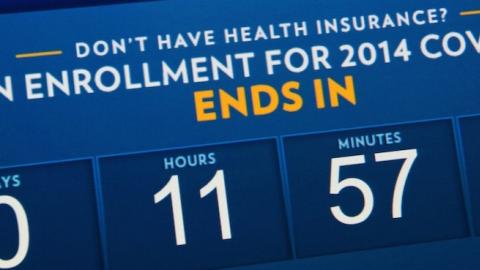Jonathan Gruber, a Massachusetts Institute of Technology economist, is making himself a household name, and not in a good way. A series of videos have emerged in recent days showing Mr. Gruber—an architect of the Affordable Care Act—telling college audiences that major parts of the law were designed purposely to mask its true cost to individual Americans.
As Mr. Gruber put it, speaking last year at a conference at the University of Pennsylvania: “Lack of transparency is a huge political advantage. And basically, you know, call it the stupidity of the American voter or whatever, but basically that was really, really critical to getting the thing to pass.”
One example cited by Mr. Gruber is the so-called Cadillac tax, as the ObamaCare excise tax on high-value employer health plans is known. The tax, which he helped devise and will take effect in 2018, imposes a 40% levy on individual health plans worth more than $10,200, and on family plans worth more than $27,500. As Mr. Gruber’s remarks were unearthed last week, economist Mark Wilson and I released a study of the excise tax that shows he is right about its deceptive design. The tax is likely to hit many people who don’t have high-end coverage.
Mr. Gruber says in one video that his real aim was to reduce the tax break available to those who get employer-sponsored insurance, about 170 million Americans. He lamented that it would be hard to persuade Congress to reduce people’s tax breaks: “You just can’t get through. It’s politically impossible.” True enough—the excise tax does the job instead. It is a stealthy way to reduce the tax preference for health care without taking it away from employers.
Mr. Gruber also noted that the real impact of the tax would fall on individual Americans: “We just tax the insurance companies, they pass on higher prices that offsets the tax break we get, it ends up being the same thing. It’s a very clever, you know, basic exploitation of the lack of economic understanding of the American voter.” In another video that surfaced on Friday, he explained that the only way to get rid of the tax preference for employer-sponsored insurance was “by mislabeling it, calling it a tax on insurance plans rather than a tax on people, when we all know it’s a tax on people who hold those insurance plans.”
Our study bears this out. While the tax is designed to be paid by companies, employees or consumers will see significant increases in costs. These cost increases will be passed on in several ways. Large employers who are subject to the excise tax in 2018 will pay an average of more than $2,700 per employee a year from 2018 to 2024. As Mr. Gruber admits, and basic economics confirms, this cost will be passed on to consumers or to employees in higher prices and lower compensation.
Employers, being rational actors, will not want to pay these taxes and will reduce their health-care benefits to limit their potential exposure to the tax. Doing this will cause employees to be hit by the excise tax in at least two other ways. If employers increase taxable wages to compensate for reducing the value of their plans, then employees will be paying more in taxes for the same compensation levels, and more after-tax out-of-pocket expenses for their health care.
From 2018 to 2024, the excise tax could cost 12.1 million employees an average $1,050 in higher payroll and income taxes a year, if employers increase their taxable wages as they reduce the cost of health-care benefits. Alternatively, if employers only reduce the value of their offerings without increasing wages and salaries, these employees could see up to a $6,150 reduction in their health-care benefits and little or no increase in pay.
Mr. Gruber also implicitly acknowledged that calling the excise tax a “Cadillac” tax is misleading, as the tax’s reach will expand. “Over time it’s gonna apply to more and more health-insurance plans,” he said, elaborating in a separate speech that the “tax that starts out hitting only 8% of the insurance plans essentially amounts over the next 20 years [to] essentially getting rid of the exclusion for employer-sponsored plans.”
This means that eventually the excise tax will affect an increasing number of workers who don’t have top-flight health insurance. By 2031 the cost of the average family health-care plan is expected to hit the excise-tax threshold. The tax’s creeping reach is reminiscent of the Alternative Minimum Tax, which was originally designed to hit only the wealthiest taxpayers but now nails the middle class.
The all-too-candid MIT economist is not likely to have a hard time paying for his own health care—Mr. Gruber reportedly received $400,000 for advising the Obama administration on the Affordable Care Act. But he is having a hard time explaining his unguarded comments about the law. His views may be obnoxious, but Mr. Gruber has performed a public service by finally telling the truth about ObamaCare and providing a glimpse of the mind-set of those who foisted it on the country. The American people are smart enough to see Mr. Gruber and the Affordable Care Act for what they are.














